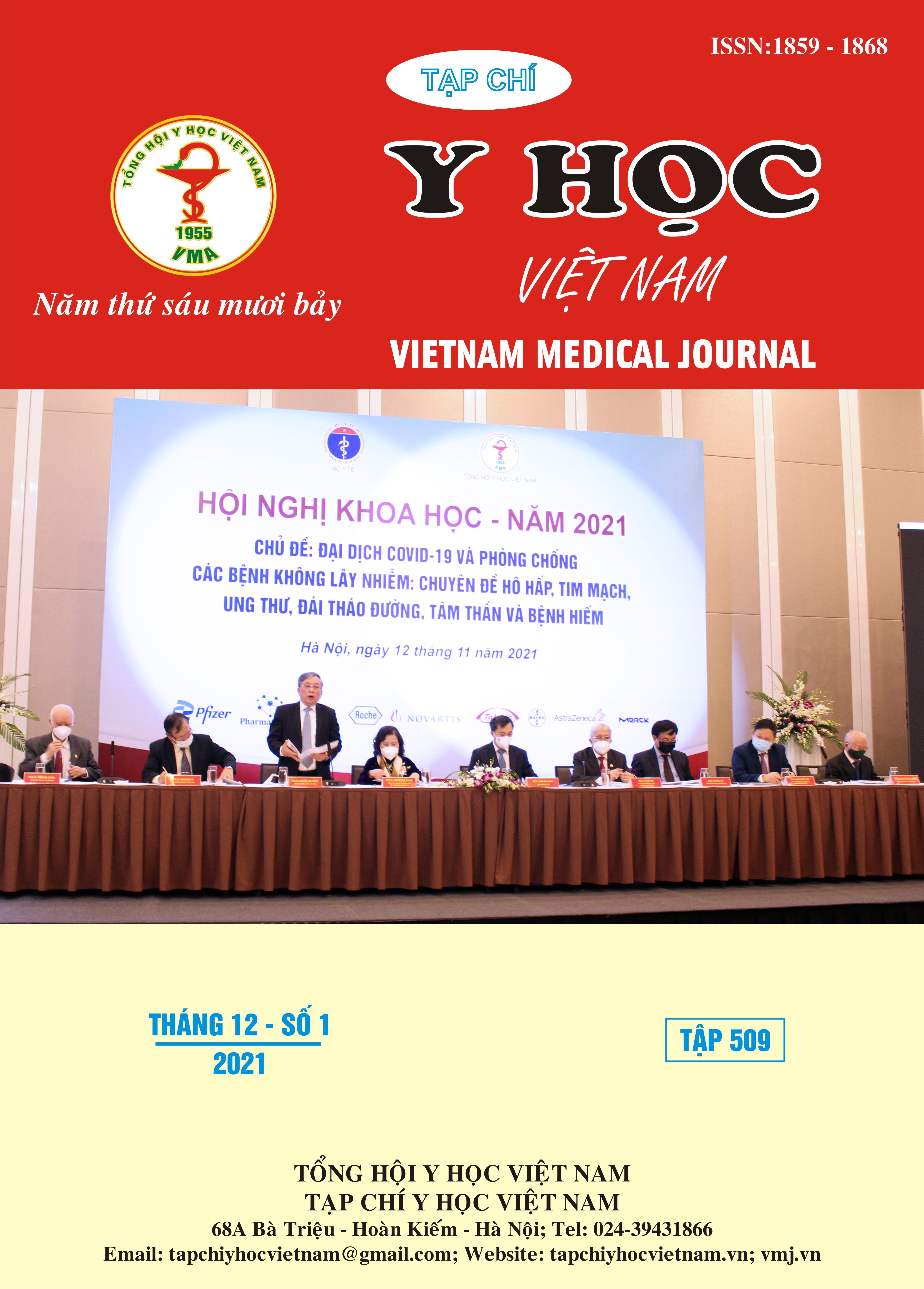PROGNOSTIC FACTORS OF PRETERM BIRTH AFTER LASER UMBILICAL CORD ABLATION FOR TWIN-TWIN TRANSFUSION SYNDROME AT HANOI OBSTETRICS AND GYNECOLOGY HOSPITAL
Main Article Content
Abstract
Objectives: To evaluate the prognostic factors to the risk of preterm birth after laser umbilical cord ablation in the treatment of twin-twin transfusion syndrome (HCTMST). Methods: This was a prospective study, data collected from October 2019 to November 2020 at Fetal Medicine center in HOGH. Twenty-one twins with a diagnosis of HCTMST stage II, III, IV before 26 gestations according to Quintero classification performed selected umbilical cord laser ablation. Results: The mean gestational age at birth was 34,70 ± 4,33 weeks, the average time of additional pregnancy retention after surgery was 12,97 weeks. The rate of preterm birth under 37 weeks was over 50%, 31% of premature birth under 34 weeks. The risk of preterm birth before 34 weeks of surgery increased by 4,33 times if the gestational week was more than 22 weeks. Similarly, the risk of preterm birth increased more than 8,67 times if the change in cervical length 48 hours after surgery was more than 9,5%. The survival rate of newborns after surgery was 90,48%. There were 2 stillbirths within 7 days after the operation, accounting for 6,06%, no intraoperative complications, and maternal complications after surgery were recorded. Conclusion: Gestational week at surgery and change in cervical length 48 hours after surgery are prognostic factors for the risk of preterm delivery after surgery.
Article Details
Keywords
Twin – Twin transfusion sydrome, twin, preterm birth, surgery, laser
References
2. J. Akkermansa, S. H. P. Peetersa, F. J. Klumpera et al (2015). Twenty-Five Years of Fetoscopic Laser Coagulation in Twin-Twin Transfusion Syndrome: A Systematic Review. Fetal Diagn Ther 38, 241-253.
3. J. S. Viral M. Pandya∗, Claire Colmant, Yves Ville (2020). Current Practice and Protocols: Endoscopic Laser Therapy for Twin-Twin Transfusion Syndrome. Maternal-Fetal Medicine, 2:1,
4. M. Amol Malshe, L. K. M. Saul Snowise M.D., M.B.B.S., Noemi Boring., andD. O. Anthony Johnson, Michael W. Bebbington, M.D. M.H.Sc., Kenneth J. Moise Jr., M.D., Ramesha Papanna, M.D., M.P.H. (2017). Preterm delivery after fetoscopic laser surgery for twin-twin transfusion syndrome: etiology and its risk factors. Ultrasound Obstet Gynecol, 49 (5), 612-616.
5. R Townsend. anda. A. Khalil (2018). Ultrasound surveillance in twin pregnancy: An update for practitioners. ISOUG,
6. Quintero R.A, Morales W.J, Allen M.H et al (1999). Staging of twin-twin transfusion syndrome. J Perinatol, 19 (8 Pt 1), 550-555.
7. S. Shinar, S. Agrawal, D. El-Chaar et al (2021). Selective fetal reduction in complicated monochorionic twin pregnancies: A comparison of techniques. Prenat Diagn, 41 (1), 52-60.
8. F. Rahimi-Sharbaf, M. Ghaemi, A. A. Nassr et al (2021). Radiofrequency ablation for selective fetal reduction in complicated Monochorionic twins; comparing the outcomes according to the indications. BMC Pregnancy Childbirth, 21 (1), 189.


